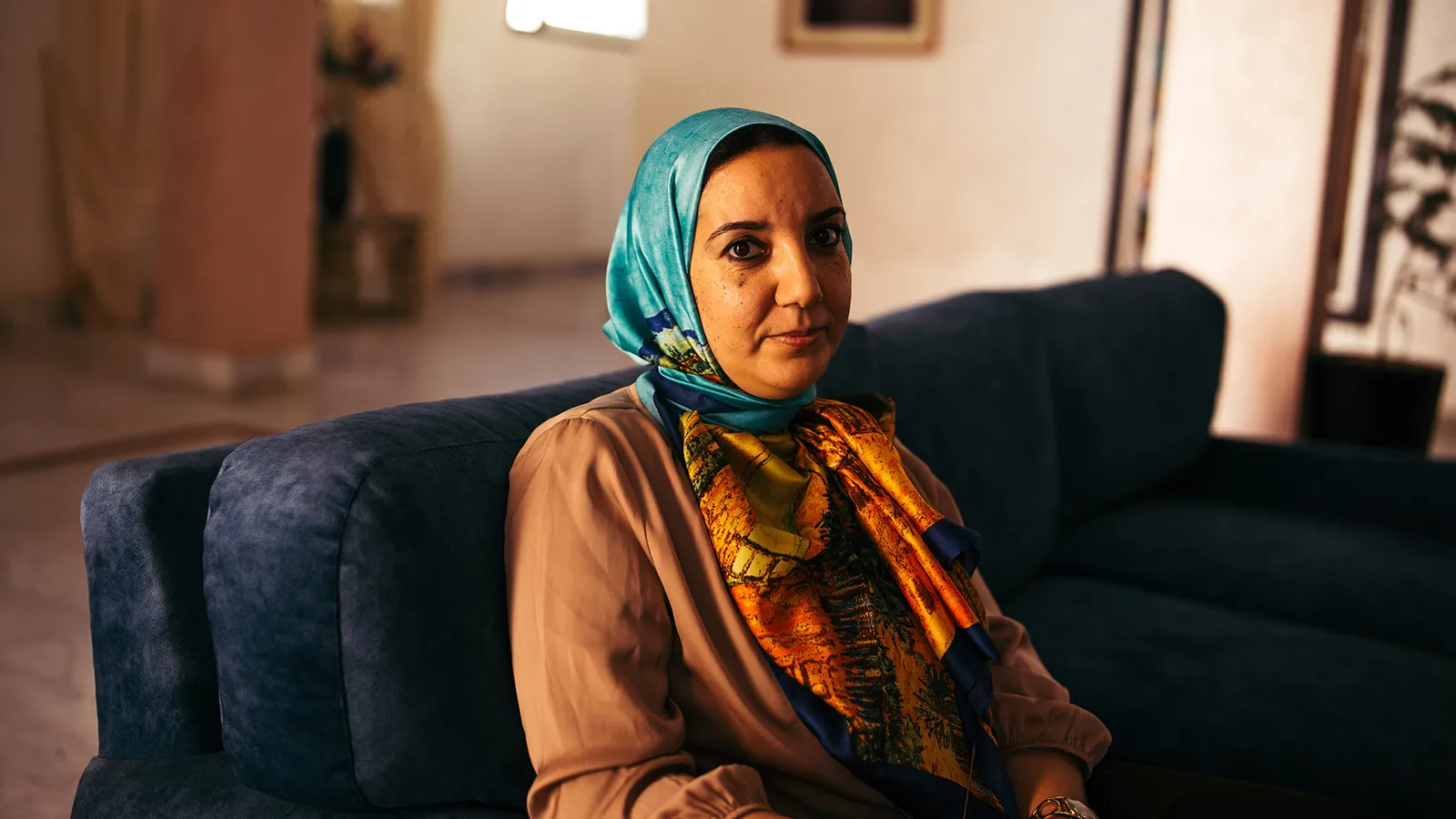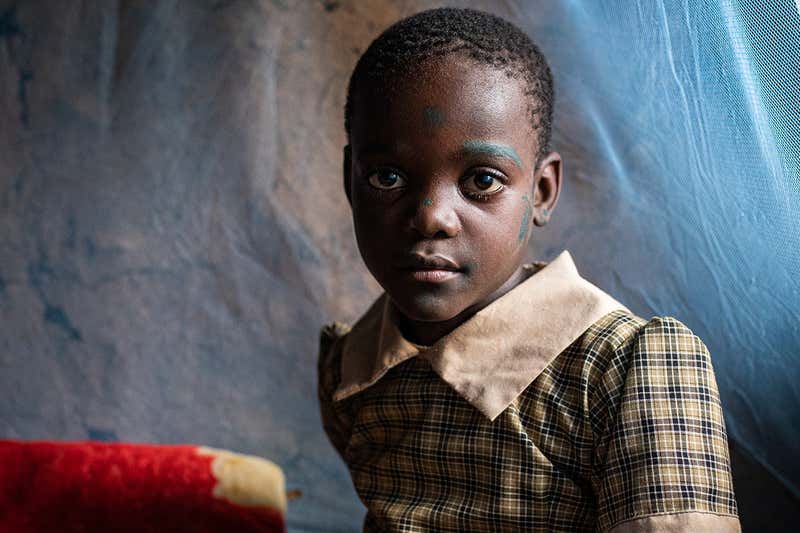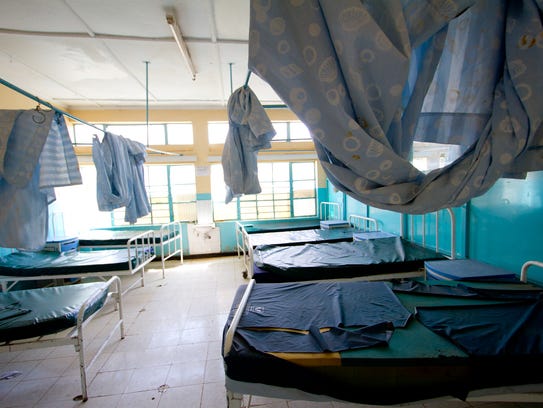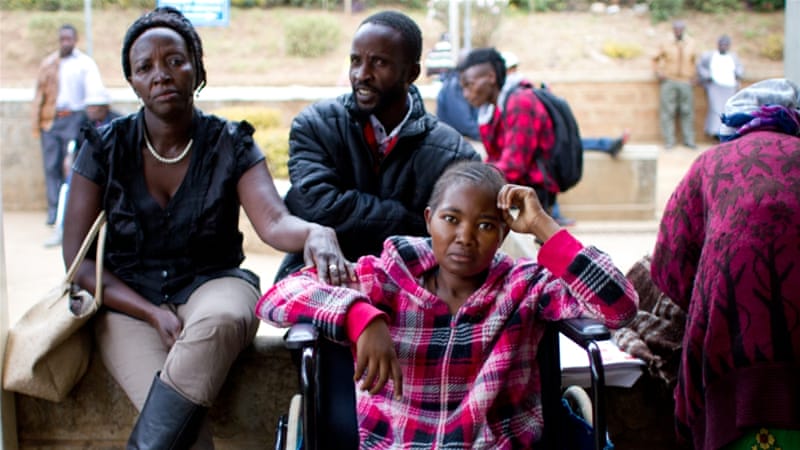In the Phosphorus-rich Western Sahara, the government in Rabat used the pandemic as cover for a political crackdown.
Read: TruthDig
In the Phosphorus-rich Western Sahara, the government in Rabat used the pandemic as cover for a political crackdown.
Read: TruthDig
Read: Devex
With support from the Pulitzer Center
In 2007, the Bill & Melinda Gates Foundation announced an ambitious endeavor: To eradicate malaria across the globe.
It was late to the game. That year, Chinese scientists working with a Chinese philanthropist had already begun eradicating malaria from the small African nation of Comoros. Now they’re setting their sights on a more ambitious location: Kenya, the East African nation of nearly 50 million people.
Read: The Atlantic

Listen: The China Africa Podcast

Immunologist Fatiha El Hilali started trying to counter fake news about vaccines after seeing a close friend die from Covid-19 (Credit: Kang-Chun Cheng)
“If I can be provocative, shouldn’t we be doing this study in Africa, where there are no masks, no treatments, no resuscitation?” said Jean-Paul Mira, head of intensive care at Cochin hospital in Paris. “A bit like as it is done elsewhere for some studies on Aids. In prostitutes, we try things because we know that they are highly exposed and that they do not protect themselves.”
Read: BBC Future
With support from the Pulitzer Center
Move over, Covid-19. Another, far more lethal disease is in danger of erupting once again. Yellow fever infects some 200,000 people and kills 30,000 of them each year–more than terrorist attacks and plane crashes combined. Stopping the next outbreak from jumping from monkeys to humans may require a novel approach: vaccinating our hairy, banana-loving brethren.
Part of our BBC Future series, Stopping The Next One, with Harriet Constable and The Pulitzer Center.
Read: BBC
In Uganda, a lesbian activist helps straight people fight stigma of a disease once thought of as ‘gay.’
Read: The Guardian

Eight-year-old Trizah Makungu sits on the bed she shares with her parents, protected by a mosquito net. These nets, which cost about $5 in the local market, have helped save millions of lives. / Lena Mucha
While most of the world is focusing on new vaccines for the coronavirus, thousands of Kenyan children are finally receiving a longed-for malaria vaccine, 37 years after development on it started.
Read: New Scientist
 May 1, 2021 edition
May 1, 2021 edition
With Support from the European Journalism Centre
Ten years after UN Peacekeepers introduced cholera to Haiti, against all odds, Haiti’s cholera crisis now appears to be over.
Read: How Haiti Curbed Cholera
Supported by the Pulitzer Center.
For 35 years, researchers have been working to develop an effective malaria vaccine. Now they are beginning to approach the goal. Read the original story at Bistandsaktuelt (Norway), or an English translation.

Empty beds at a hospital in Kenya where patients have been turned away because there are not enough doctors working to treat them. Staff say typically the beds would be full of patients. Jan 30, 2016 (Photo: Jacob Kushner)
NAIVASHA, Kenya — Nancy Ndirango grimaced in pain as she waited eight hours at a hospital here with a broken right leg, the result of a fall on her way to school. But there was no doctor to see her because they are on strike.
“People can die,” Ndirango, 17, complained. “(The government) should pay them what they’re asking so they can get back to work.”
Ndirango’s plight at the eerily empty hospital in this town, about 50 miles north of the capital, Nairobi, is being felt by millions of Kenyans as a national strike by 5,000 public-sector doctors demanding better pay and work conditions enters its fourth month. They walked off the job Dec. 5 to protest the government’s failure to make good on a 2013 agreement to double salaries and hire thousands of new doctors to fill a severe shortage of physicians.
“Sadly it’s the lower class that’s suffering,”said Judy Karagania, a resident in opthalmology at Nairobi’s largest public hospital. Sometimes, overcrowding in Kenya’s underfunded public hospitals can be a matter of life or death.
Read the full story at USA Today.

Jacob Kushner/Al Jazeera
One month after Al Jazeera published the story of Dorcas Kiteng’e’s struggle for cancer treatment in a nation whose doctors are on strike, the 25-year-old has died due to lack of proper care.
Some 5,000 public sector doctors walked out on December 5 after Kenya’s leaders failed to make good on a 2013 agreement to raise salaries, hire new physicians and improve conditions in public hospitals. The standoff between the health ministry, which lost $53 million last year due to corruption, and the doctors, continues to drag on. Nobody knows how many hundreds or thousands of Kenyans have died as a result of the government’s refusal to pay and the doctors’ refusal to return to work until that happens.
This is the story of one of those victims – the final days in the life of Dorcas Kiteng’e.
Read the article at Al Jazeera.

Kenya’s hospitals have almost ground to a halt, with millions facing a third month in a row without healthcare as doctors strike over low pay and poor working conditions.
The public healthcare system has long been overburdened and underfunded, but has now virtually stopped functioning after 5,000 doctors walk out in December after attempts to reach a compromise with the health ministry stalled.
“The machines break down frequently, the doctors are overwhelmed. The patients, they are so many that they are lying on the ground,” said Dr Judy Karagania, an ophthalmology resident at Kenyatta National hospital (KNH) in Nairobi, who is taking part in the industrial action.
Karagania and her colleagues are refusing to return to work until the government makes good on a 2013 agreement to dramatically increase salaries, hire thousands of new doctors and address drug and equipment shortages.
As the standoff drags on, Kenyans are suffering from the lack of care.
“The army doctors are turning away patients,” said Karagania, who normally works as a resident medical officer at KNH. “They’re only handling the emergencies of emergencies.”
Read the full article in The Guardian.

Kenya’s public sector doctors began striking two months ago to protest against the Ministry of Health’s failure to implement a 2013 agreement which included raising salaries /Jacob Kushner
Kijabe, Kenya – At the bottom of a winding, tree-lined road, a crowd of patients spills out of the entrance of a private hospital waiting room on to a patio and a dirt parking lot. It begins to rain, and a man on crutches tries to hobble into the cramped building for cover.
Sitting in a wheelchair outside the door is Dorcas Kiteng’e, a 25-year-old woman suffering from cancerous growths in her ovaries.
“They’re pressing down on the spine, they’re paralysing her,” says Mwende Mutambuki, Kiteng’e’s sister-in-law. “She can’t walk. Back pain, leg pain – I’m hoping it hasn’t spread.”
Kijabe is the third hospital they’ve visited since they arrived in the Kenyan capital Nairobi last week, looking for an oncologist who could perform the surgery, only to be turned away.
“They sent us to Agha Khan,” says Mutambuki, referring to the private Nairobi hospital that’s regarded as one of the nation’s finest. “But we know we were not going to be able to afford that.”
She fears time is running out to save her sister-in-law: “It’s a matter of life or death.”
Two months ago Kenya’s public sector doctors walked out on strike, and millions of Kenyans who normally depend on them are beginning to overwhelm the nation’s private hospitals, particularly in rural areas.
Read the full article at Al Jazeera.


Photo / JACOB KUSHNER
On an overcast morning in Nairobi, commuter buses drive down a crumbling road into Kibera, a densely packed slum. A sign at the bus station reads “public toilets,” but the doors are locked.
It’s estimated that Kibera has just one toilet for every 2,500 of its approximately 250,000 residents. Without toilets to relieve themselves, people “use any means, whether it’s a [plastic] bag or a can,” explained Fred Amuok, Community Liaison for a Kenyan rights-based organization called Umande Trust.
The World Health Organization estimates that 1.5 million people die every year from diarrhea, often the result of poor sanitation. There’s also a financial cost: studies show that Kenya loses US$324 million each year in missed work hours due to sickness brought on by poor sanitation. According to the sanitation company Sanergy, four million tonnes of fecal sludge escape into Kenya’s waterways and fields every year.
But Umande Trust has come up with an innovative approach to providing affordable toilets for Kibera’s residents and turning human waste into cooking fuel–one that’s already been working for more than a decade.
Read the full story as it appeared on Impact Journalism Day 2016 at Solutions&Co by SparkNews.